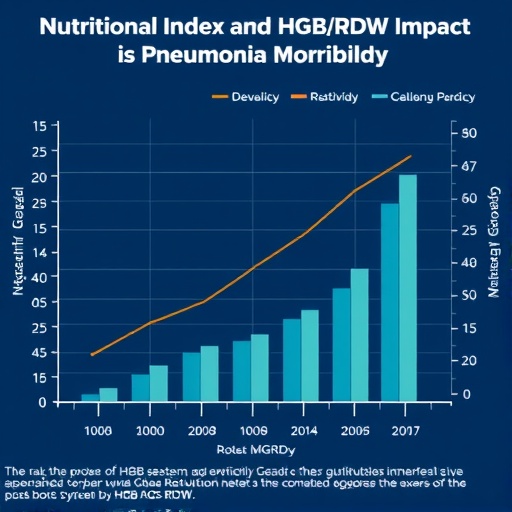EAST LANSING, Mich. — Effective population level vaccination campaigns are fundamental to public health. Countercampaigns, which are as old as the first vaccines, can disrupt uptake and threaten public health globally.

Credit: Courtesy: Young Anna Argyris
EAST LANSING, Mich. — Effective population level vaccination campaigns are fundamental to public health. Countercampaigns, which are as old as the first vaccines, can disrupt uptake and threaten public health globally.
Even before March 2020, vaccine hesitancy was directly linked to misinformation — false, inaccurate information promoted as factual — on social media. Once COVID-19 reached pandemic status, social media was acknowledged as the epicenter of information leading to vaccine hesitancy, which the World Health Organization, or WHO, defines as “a delay in acceptance or refusal of vaccination despite availability of vaccination services.”
Young Anna Argyris, associate professor in the Michigan State University Department of Media and Information, is part of an international team studying the detrimental effects of vaccine misinformation on social media and interventions that can increase vaccine uptake behaviors.
The team, led by Columbia College Professor Kai Ruggeri, recently had a study published in the British Medical Journal, or BMJ, which is ranked eighth among all research journals in the world. “Misinformation is not new, and its noxious consequences are not unsurmountable, but its effect on vaccine hesitancy through social media is an urgent global threat to public health,” Argyris said. “Increasingly robust evidence has shown the drivers and effects of this phenomenon, but few successful interventions exist.”
Argyris has been researching vaccine hesitancy, misinformation and social media since 2018. In 2022, she and her graduate student colleagues published a study on intervention-based social media campaigns. The study caught the eye of Ruggeri, who then asked Argyris to contribute to the BMJ article.
“My research aims to alleviate bias, misjudgment and delays in decision-making, thereby improving effectiveness and efficiency — and, consequently, equity and quality of life in our society,” Argyris said.
In the BMJ article, Argyris and her co-authors outline 10 insights, based on existing research, that should help provide a clear, specific, evidence-driven toolkit to reduce vaccine hesitancy:
1. Negative sentiments on social media might increase vaccine hesitancy faster than interventions reduce it.
There is ample evidence of a proliferation of anti-vaccine messages on social media leading to organized offline actions and increased hesitancy. There is less evidence that efforts to specifically mitigate misinformation have had a reliable effect on real-world uptake.
2. Messaging seems to work best when it is tailored to what groups know and care about.
Once misinformation and conflicting views are prevalent, speaking directly to audiences, knowing the reasons for hesitancy and framing information in a way that matters to individuals are crucial.
3. Simple messaging about benefits and risks based on probabilities is not enough.
Messages must be conveyed in a way that affirms individual cultural values, deals with topics of importance to individuals — not only health facts — and uses credible sources of information. Visual imagery also helps deliver effective messages.
4. Correct misinformation to both parents and their children.
Addressing parents is clearly of value, but young people also seek out information online for themselves. Directly involving parents and young people in the design of messaging might strengthen the effectiveness of child vaccination campaigns.
5. Trust matters: the message, the messenger and the (vaccinated) provider.
Trust is potentially the most distinct characteristic of successful vaccination campaigns, including ones delivered on social media. The source of the message, whether a health care provider, politician or social media influencer, is likely to have a major role in whether individuals and communities deem information credible. These interventions have great potential when delivered to the right populations.
6. Debunking efforts have shown mixed effects on social media.
Distributing information from public institutions or providing objecting information from third parties might help to counter misinformation, reduce the intention to spread misinformation and promote health behaviors, but the process isn’t always smooth. The backfire effect is a concerning pattern in which disproving misinformation reinforces it and it deepens false beliefs.
7. Raising the quality and visibility of reliable information can counter misinformation.
The high volume of misinformation appearing in online searches can override more reliable sources, limiting the effectiveness of information on how, where and when to get a vaccine. Graphics, posters and videos help target populations see and engage with accurate, accessible information.
8. Framing of vaccine messages matters.
A public campaign can’t cover all vaccines, diseases, populations and reasons for hesitancy. Framing messages to be directly relevant to a populations’ needs — addressing the benefits and risks specific to the population group — have resulted in significant increases in vaccine uptake.
9. Blanket bans can drive groups and activities underground.
Broad social media bans of individuals or of specific content can paradoxically result in the spread of misinformation and can galvanize echo chambers by driving discussion into private social media groups or closed forums.
10. Social media platforms need to be part of the solution.
Social media companies should be more proactive in dealing with the abundance of misinformation on their sites. Making data available and working with researchers and regulators in all countries is critical in developing effective solutions to address misinformation.
###
Michigan State University has been advancing the common good with uncommon will for more than 165 years. One of the world’s leading public research universities, MSU pushes the boundaries of discovery to make a better, safer, healthier world for all while providing life-changing opportunities to a diverse and inclusive academic community through more than 400 programs of study in 17 degree-granting colleges,
Journal
The BMJ
DOI
10.1136/bmj-2023-076542
Subject of Research
People
Article Title
Behavioural interventions to reduce vaccine hesitancy driven by misinformation on social media
Article Publication Date
16-Jan-2024




